Vocabulary enhancement Normal Elementary Phonics Worksheets for Ages 4-8
6 filtered results
-
From - To
Boost your child's vocabulary with our Vocabulary Enhancement Normal Elementary Phonics Worksheets, designed for ages 4-8! Our engaging, interactive worksheets focus on phonics skills while expanding word knowledge through fun activities. Children will explore letter sounds, blends, and sight words, making learning enjoyable and effective. Each worksheet is tailored to enhance reading comprehension, spelling, and language organization. With vibrant visuals and creative exercises, these resources cater to young learners at any skill level. Watch your child flourish in their reading journey, building confidence and a love for words. Unlock their potential with our thoughtfully crafted phonics worksheets today!
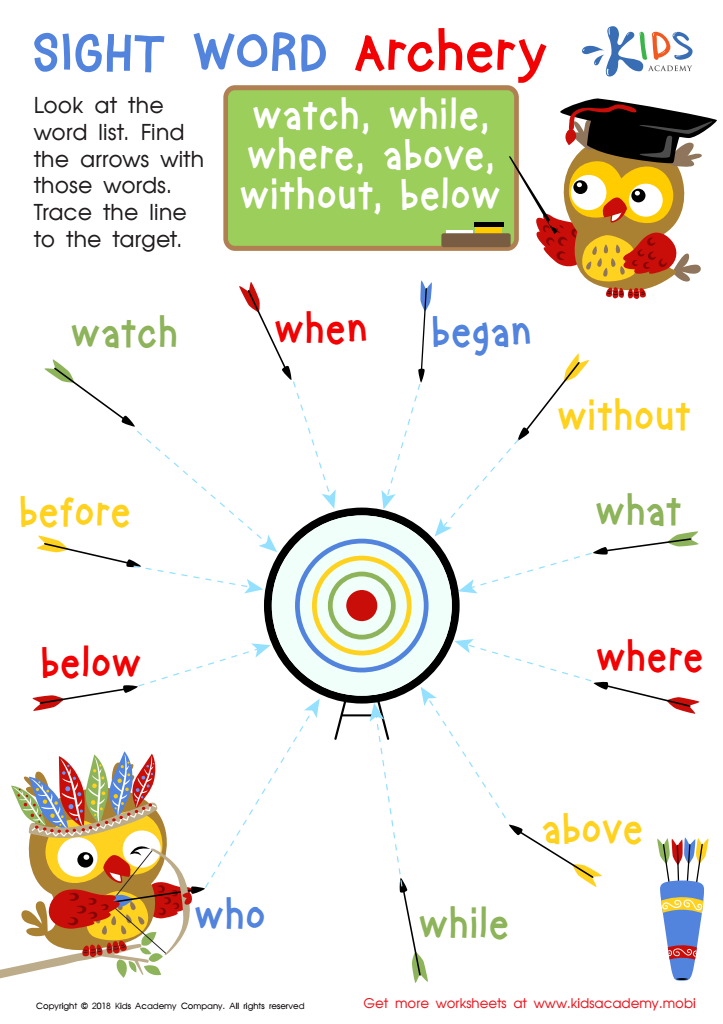

Sight Word Archery Worksheet
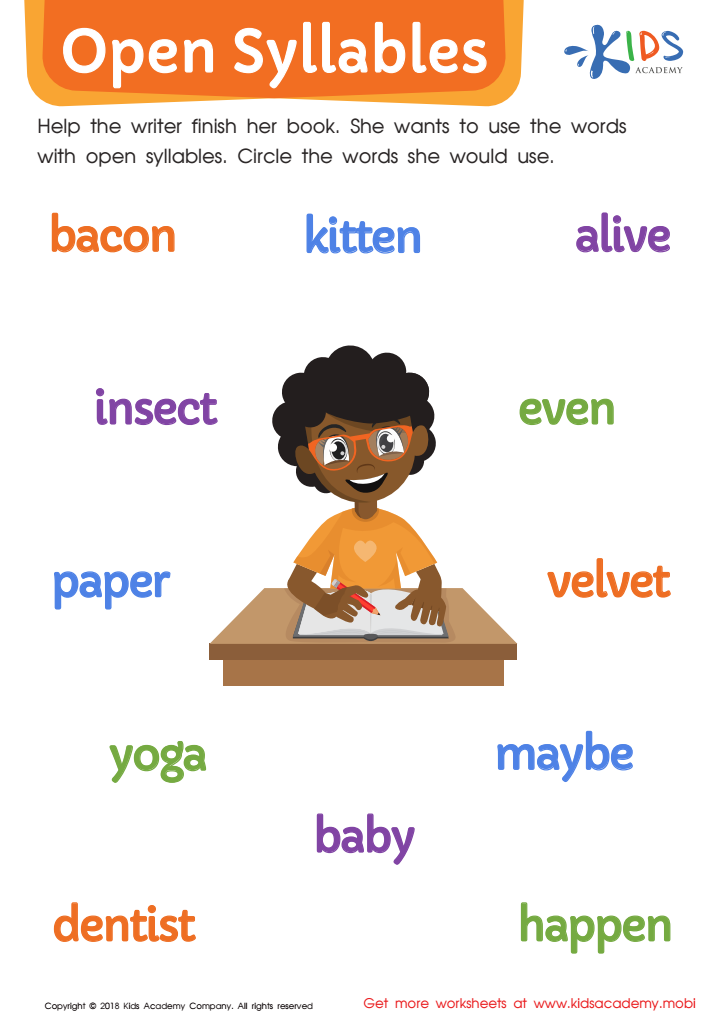

Open Syllables Worksheet


How Many Syllables? Worksheet
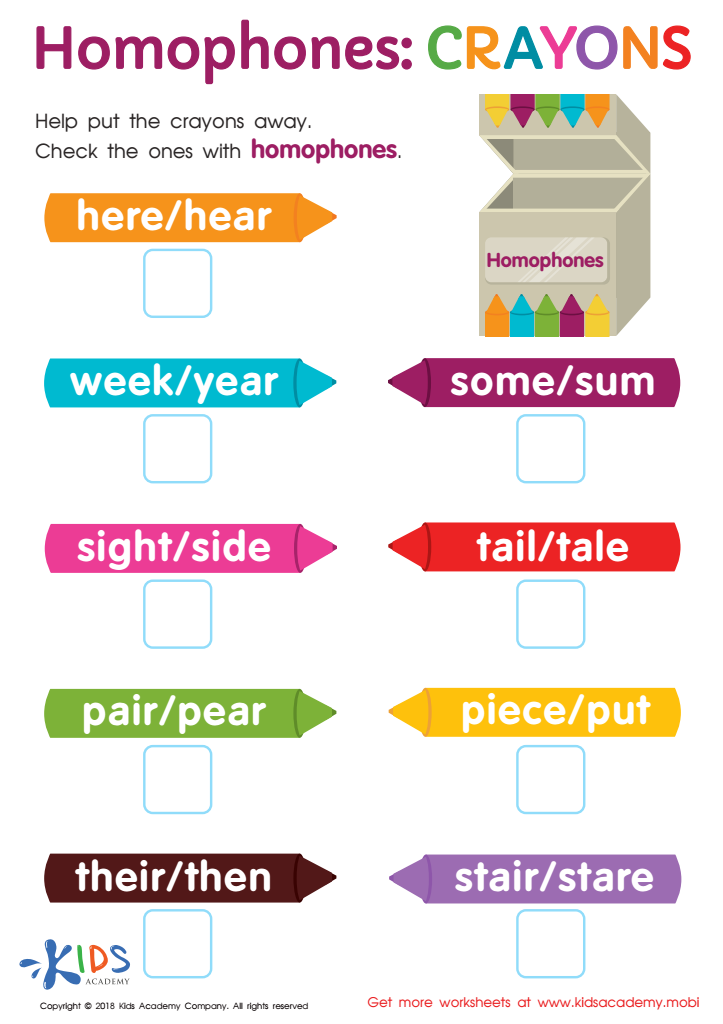

Homophones: Crayons Worksheet
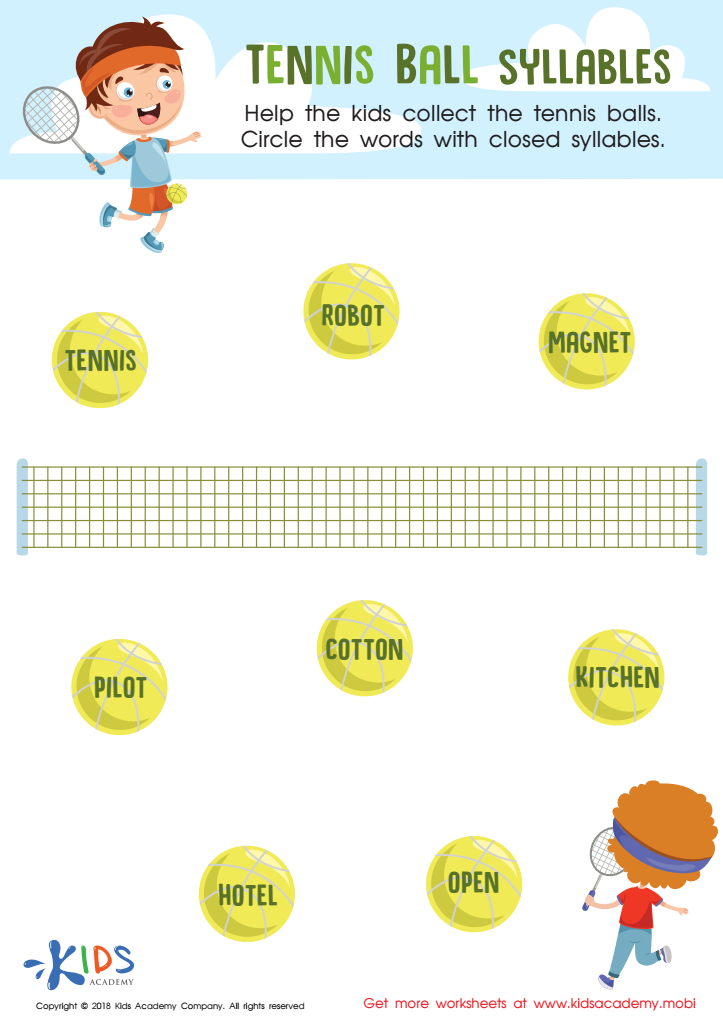

Tennis Ball Syllables Worksheet
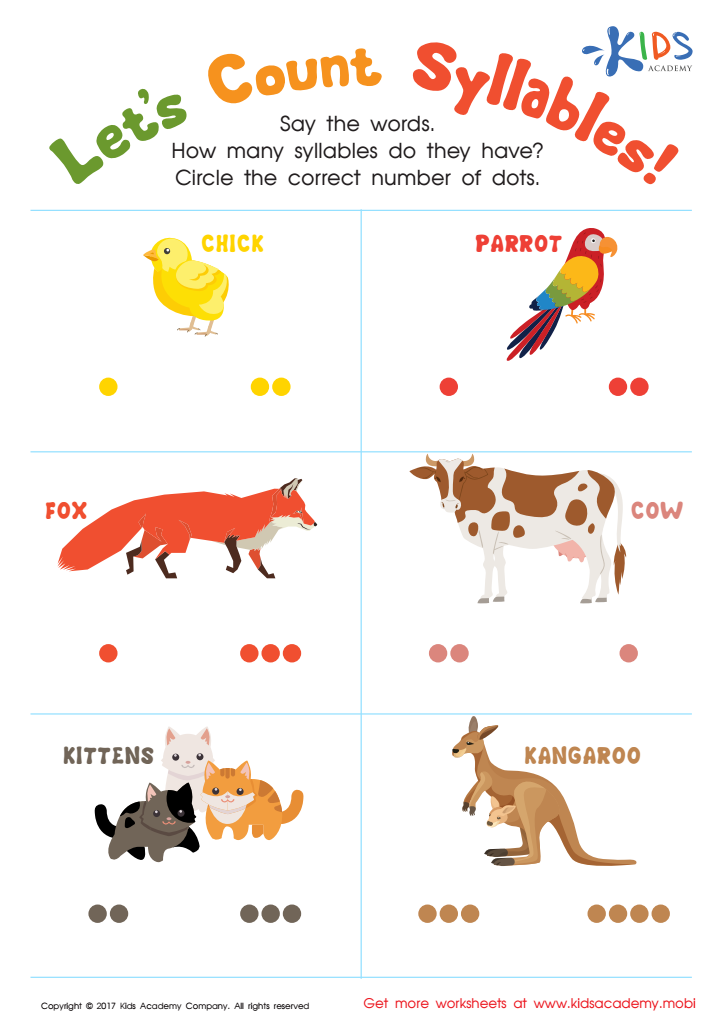

Lets Count Syllables Worksheet
Vocabulary enhancement through normal elementary phonics is crucial for children aged 4-8 as it lays the foundation for literacy and overall academic success. At this developmental stage, children are poised to absorb language rapidly, making it the ideal time to introduce phonics, which combines sounds and letters to aid in word recognition and pronunciation.
A robust vocabulary is not just about knowing words; it enriches reading comprehension, boosts confidence in speaking, and is essential for effective communication. Parents and teachers should specifically focus on vocabulary because it directly influences a child's ability to understand the world around them and engage in narrative-building and storytelling, vital aspects of cognitive and emotional development.
Furthermore, studies show that early vocabulary development correlates with future academic achievements. By integrating phonics into daily learning, educators can help children decode new words, allowing them to explore their interests through reading. This blend of phonics and vocabulary expansion also fosters a lifelong love of learning, as children become more proficient and enthusiastic readers. Ultimately, prioritizing vocabulary enhancement empowers children, equips them for future challenges, and enriches their educational journey.
 Assign to My Students
Assign to My Students









